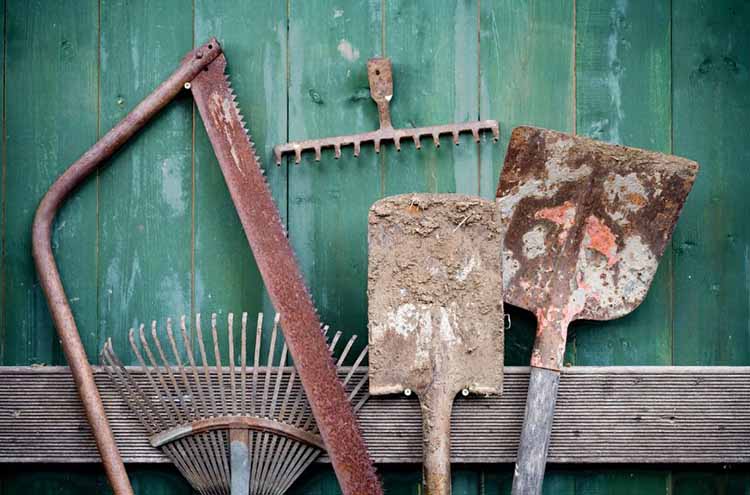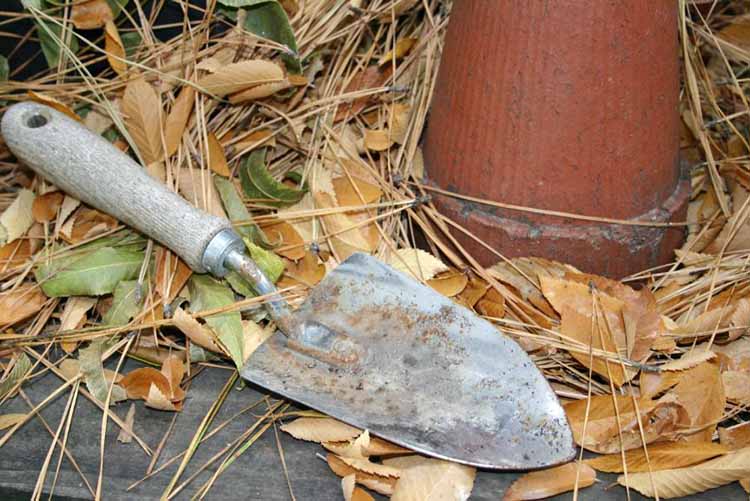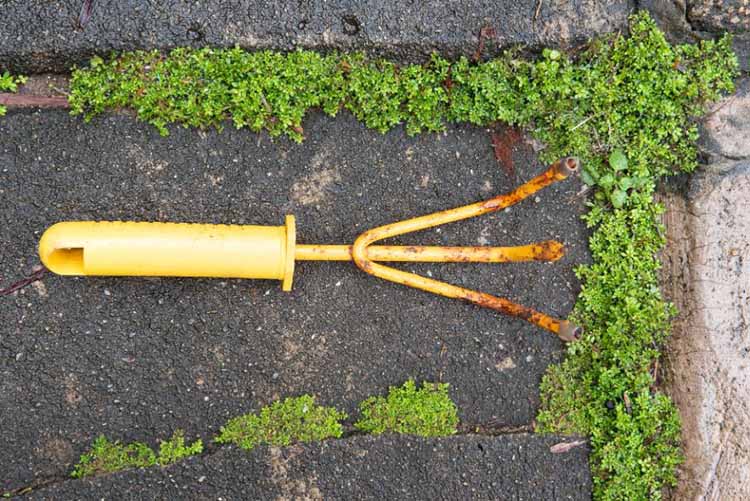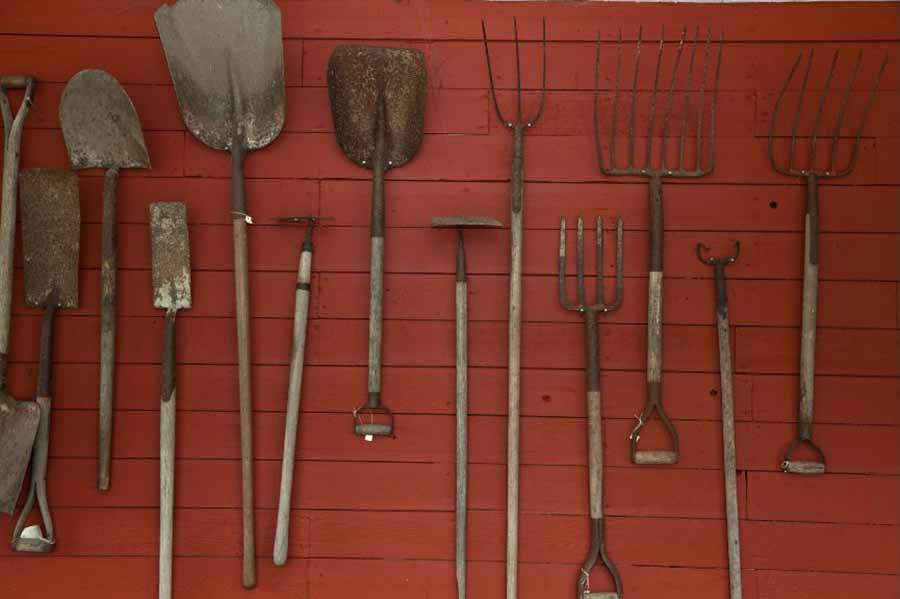Have you ever reached for your trusty shovel in the spring, only to find it compromised by a layer of frustrating rust? This common enemy of gardeners everywhere can quickly render your tools dull and ineffective. But why do garden tools rust? The culprit lies in a scientific process called oxidation, fueled by the very elements that make gardening possible: moisture and air. That’s why understanding the root causes of rust is paramount to preserving the integrity of our cherished gardening implements. Delving deeper, we’ll explore the reasons behind rust formation on garden tools, and provide you with the knowledge to keep your gardening companions shiny and sharp.
Understanding Rust Formation
Rust formation is typically driven by two factors: moisture and oxygen. When metal tools are exposed to water or high humidity levels, oxygen molecules in the air react with the metal surface leading to the formation of iron oxide, commonly known as rust. Indeed, rust formation can be triggered by various factors, including:
Moisture and Oxygen:
Moisture acts as a key element for rust formation by facilitating the oxidation process. Rain, dew, and irrigation water can all contribute to the accumulation of moisture on garden tools, especially if they are not adequately protected or stored. Oxygen, abundant in the atmosphere, reacts with the metal surface to create rust, accelerating corrosion over time.

Salinity:
Saltwater and salty environments increase the rate of rust formation due to the presence of chloride ions. These ions speed up the corrosion process by accelerating the breakdown of the metal’s protective oxide layer.
Temperature:
Warmer temperatures can expedite the chemical reactions involved in rust formation. Higher temperatures lead to increased moisture levels in the air, further promoting oxidation.
pH Levels:
Acids present in rainwater or soil can lower the pH of the soil. That is more conducive to rust formation. Acidic conditions can corrode metal surfaces more rapidly than neutral or alkaline conditions.
Surface Damage:
Scratches, dents, or other forms of physical damage to the metal surface can provide entry points for moisture and oxygen. It hasten the onset of rust formation.
Atmospheric Pollutants:
Airborne pollutants such as sulfur dioxide and nitrogen oxides can react with moisture in the air to form acidic compounds. These compounds can accelerate rust formation by increasing the acidity of the environment and corroding metal surfaces.
Biological Factors:
Organic matter, such as plant debris or animal waste, can promote rust formation by trapping moisture against metal surfaces. Besides it provides nutrients for corrosion-causing microorganisms.
Galvanic Corrosion:
When two dissimilar metals come into contact in the presence of an electrolyte (such as moisture), an electrochemical reaction occurs. It leads to accelerated corrosion of the less noble metal. This phenomenon, known as galvanic corrosion, can contribute to rust formation in mixed-metal tools or structures.
Types of Garden Tools Prone to Rust
Metal Tools
Garden tools made from metal, such as spades, hoes, and trowels, are particularly susceptible to rust due to their iron or steel composition. These tools are exposed to damp soil, plant residue, and precipitation. These are the prime targets for rust formation.

Steel and Iron Implements
Steel and iron implements, including pruning shears, hedge clippers, and lawn mower blades, are also prone to rust if not properly maintained. The sharp edges and intricate mechanisms of these tools provide ample surface area. Moisture and oxygen come across these areas and initiate the rusting process.
Effects of Rust on Garden Tools
Rust compromises the aesthetic appeal of garden tools. Also undermines their structural integrity. As rust accumulates, it corrodes the metal surface weakening the tool’s construction and causing irreparable damage. In addition to cosmetic concerns, rust can impair the functionality and longevity of garden tools. Rust buildup may hinder moving parts, diminish cutting efficiency, and compromise tool performance. Ultimately these causes render them ineffective for gardening tasks.
Preventive Measures Against Rust
Proper Storage Techniques
Store garden tools in a dry, well-ventilated area to prevent prolonged exposure to moisture and humidity. Consider investing in storage solutions such as tool sheds, cabinets, or weatherproof containers to shield your tools from the elements.
Regular Cleaning and Maintenance
Implement a routine maintenance regimen to keep garden tools clean and free of rust. After each use, thoroughly clean tools with a brush or cloth to remove dirt, debris, and plant residue. Dry tools promptly to prevent moisture buildup and apply a thin layer of oil or lubricant to metal surfaces to inhibit rust formation.
Protective Coatings and Treatments
Consider applying protective coatings or treatments to garden tools to provide an additional layer of defense against rust. Rust-resistant paints, enamel coatings, or specialized rust inhibitors can help seal metal surfaces and prolong the lifespan of your tools.

Conclusion
In short, garden tools rust because they’re made of metals susceptible to oxidation. Besides their environment exposes them to moisture, dirt, and other elements that accelerate this process. However, while rust may pose a persistent threat to garden tools, proactive measures can effectively prevent its impact. With proper care, including cleaning, drying, and storing them correctly, you can keep tools remain in optimal condition.
FAQs
How can I tell if my garden tools are rusting?
You can tell if your garden tools are rusting by observing reddish-brown patches or discoloration on the metal surfaces. Additionally, rough or pitted areas on the tools indicate corrosion. If you notice flakes or powdery residue on the tools, it’s a sign that rust is present.
Can rusted garden tools be salvaged?
Yes, rusted garden tools can be salvaged. You can remove rust by scrubbing with a wire brush or using a rust-removal solution. Afterward, applying a protective coating like oil or paint can help prevent future rusting. However, extensive rust damage may require professional restoration or replacement.
Are stainless steel garden tools immune to rust?
While stainless steel garden tools are highly resistant to rust, they’re not entirely immune. They can still develop rust in certain conditions, such as prolonged exposure to corrosive environments or damage to the protective chromium oxide layer. Thus proper maintenance is essential to prevent rust formation on stainless steel tools.
How often should I oil my garden tools to prevent rust?
To prevent rust, it’s advisable to oil your garden tools after completing each gardening session. If you are short of time, doing at least once a month will be okay. Applying a thin coat of oil helps protect the metal surfaces from moisture and oxidation. It also helps to extend the lifespan of your tools.
What is the best way to store garden tools during the winter months?
The best way to store garden tools during winter is to clean them thoroughly, remove any dirt or debris, and dry them completely. Then, store them in a dry, sheltered area. For instance a garage or shed. Also can hang them up or place them in a designated storage rack to prevent moisture buildup and rust formation.
